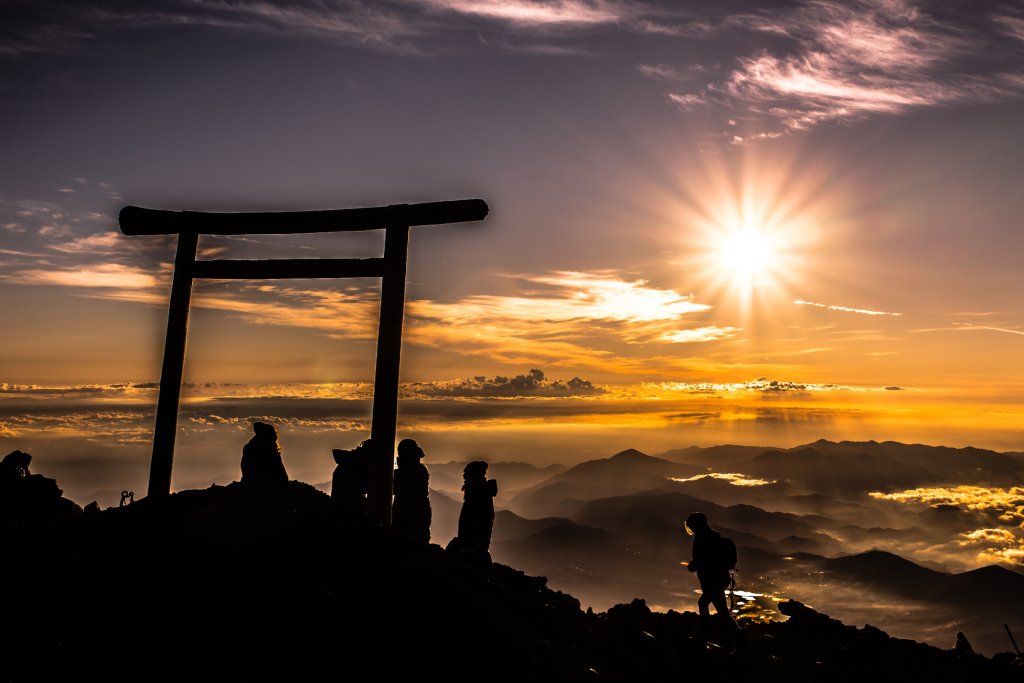Introduction to the Cultural Importance of Sacred Mountains in Asia
Asia, with its vast and diverse landscape, is home to some of the world’s most revered mountains. These sacred peaks, rising majestically above the earth, have been central to the spiritual and cultural lives of countless generations. From the towering heights of Mount Fuji in Japan to the revered Mount Kailash in Tibet, sacred mountains play an essential role in religious practices, cultural traditions, and local myths that have shaped societies for centuries.
The cultural significance of these mountains is deeply rooted in Asia’s religious and philosophical traditions. They are often seen as the dwelling places of gods, spiritual beings, or ancestors, and thus, these sacred mountains are viewed not only as natural wonders but as physical embodiments of the divine. Whether it is the towering peaks of the Himalayas or the solitary majesty of Mount Fuji, the mountain’s sacredness is embedded in its symbolism and the role it plays in the lives of those who revere it.
Mountains in Asia often feature prominently in local belief systems. For Buddhists, they represent the path to enlightenment, a place where one can find peace, clarity, and transcendence. In Hinduism, mountains are associated with gods, serving as their homes or as places for divine intervention. For many indigenous traditions, mountains are the source of life and a link between humans and the natural world. Sacred mountains serve as a reflection of the harmony between the heavens and the earth, where the physical world and spiritual realm converge.
Moreover, sacred mountains often become the focus of pilgrimage routes, drawing thousands of believers who embark on arduous journeys to pay homage to these revered sites. Whether for spiritual fulfillment, penance, or cultural continuity, these mountains are destinations where the human spirit can connect with the divine and nature’s grandest creations. The act of pilgrimage itself is a transformative journey, one that involves not only physical endurance but spiritual awakening.
Notable Sacred Peaks: Mount Fuji, Mount Kailash, Mount Shasta
Throughout Asia, certain mountains stand out for their spiritual and cultural importance. Three of the most notable sacred mountains are Mount Fuji in Japan, Mount Kailash in Tibet, and Mount Shasta in the United States. Each of these peaks has its own unique cultural significance and draws pilgrims and adventurers from around the world.
- Mount Fuji (Japan)
Mount Fuji is one of the most iconic and sacred mountains in Japan. It has been an object of worship for centuries, and it remains a powerful symbol of Japan’s spiritual and natural heritage. For many centuries, Mount Fuji has been associated with Fujiko, a group of Shinto mountain worshippers, who believed that the mountain was home to deities and a place of divine power. Pilgrims have climbed the mountain for spiritual reasons, and today, the mountain continues to draw thousands of visitors, both religious and secular.
Mount Fuji’s symmetrical cone shape and towering height make it an iconic feature of Japan’s landscape. The mountain is not only admired for its beauty but also for its deep connection to Japanese culture. It is celebrated in art, literature, and poetry, notably in the works of famous artists like Hokusai, whose iconic woodblock print series, Thirty-Six Views of Mount Fuji, captures the mountain’s majesty.
The pilgrimage to the summit of Mount Fuji is a deeply spiritual experience. The hike itself is symbolic of the journey to enlightenment. Many pilgrims, especially those who climb in the early hours, do so with the intention of witnessing the breathtaking sunrise, which is seen as a spiritual renewal.
- Mount Kailash (Tibet)
Mount Kailash, located in the western Himalayas in Tibet, is considered one of the holiest mountains in the world. Revered in Hinduism, Buddhism, Jainism, and the indigenous Bon religion, Mount Kailash is not just a physical peak but a center of spiritual significance for millions of people. According to Hindu belief, Mount Kailash is the abode of Lord Shiva, one of the principal deities in Hinduism, while in Buddhism, it is seen as the home of Sakyamuni (the Buddha).
Pilgrims from across Asia undertake the arduous Kora (circumambulation) of Mount Kailash, which involves walking around the base of the mountain—an act that is believed to cleanse the soul and earn spiritual merit. This journey, which takes several days, is often undertaken by barefoot pilgrims, despite the harsh conditions, in pursuit of religious merit and spiritual purification. The mountain’s sacredness is also linked to the region’s high-altitude terrain, with its remote and rugged beauty symbolizing the profound connection between the divine and the natural world.

- Mount Shasta (United States)
Although not technically part of Asia, Mount Shasta in northern California is revered by many indigenous peoples, particularly the Shasta and Wintu tribes. This peak, which rises dramatically in the landscape, is considered a sacred place of power and spiritual energy. In Native American traditions, Mount Shasta is believed to be the home of powerful spirits and a place where the divine meets the earthly realm.
For the indigenous peoples of the area, the mountain is a central part of their creation myths and spiritual practices. They believe that the mountain holds a connection to the spiritual world, with its icy summit and rugged landscape embodying the forces of nature. Mount Shasta has also become a place of pilgrimage for spiritual seekers, with many visiting the mountain to meditate, perform rituals, or simply connect with its powerful energies.
While Mount Shasta’s connection to Asian spirituality may not be as direct as Mount Fuji or Kailash, its role in local Native American traditions makes it an important sacred peak with its own rich cultural significance. It also draws visitors from all over the world seeking a place of spiritual renewal and reflection.
Local Spiritual Customs Tied to Mountain Pilgrimage
The tradition of pilgrimage to sacred mountains is deeply intertwined with local spiritual customs and beliefs. These customs vary from mountain to mountain, but they share a common thread: they offer individuals a way to connect with the divine, the earth, and their own inner spiritual journey.
- Mount Fuji’s Pilgrimage Rituals
In Japan, Mount Fuji has long been the site of Shinto pilgrimage. Pilgrims, called Fujiko, often ascend the mountain as part of a religious practice that symbolizes the pursuit of spiritual purification and self-discipline. The climb to the summit is seen as a metaphor for overcoming life’s challenges and achieving enlightenment. Pilgrims often carry offerings of sacred Ema (wooden plaques with prayers) and visit shrines along the trail. - Mount Kailash’s Kora
The Kora around Mount Kailash is one of the most important spiritual rituals in Tibetan Buddhism and Hinduism. Pilgrims walk around the base of the mountain in a clockwise direction, offering prayers and chanting mantras. The Kora is believed to purify the soul, remove obstacles from one’s life, and bring about spiritual blessings. Some pilgrims even perform prostrations along the way, a physically demanding act that represents their devotion. - Mount Shasta’s Sacred Sites
For the indigenous peoples of Northern California, Mount Shasta has long been the site of spiritual ceremonies, including fasting, prayer, and offerings to the mountain’s spirits. The mountain is seen as a place of healing and connection, with sacred sites scattered throughout the surrounding area. Pilgrims may visit these sites to seek guidance, healing, or a closer connection to nature’s spiritual energy.
Best Hiking Routes to Experience These Mountains
If you’re interested in experiencing the sacredness of these mountains, there are a number of hiking routes that will not only allow you to appreciate the natural beauty but also to immerse yourself in the cultural significance of these sacred sites.
- Mount Fuji
One of the most accessible sacred mountains for hikers, Mount Fuji offers several routes to the summit, including the popular Yoshida Trail. This well-maintained path allows hikers to enjoy breathtaking views of the surrounding landscape while experiencing the spiritual atmosphere of the mountain. Climbers often begin their ascent at night to reach the summit in time for the sunrise, which is considered a transformative experience. - Mount Kailash
The Kora around Mount Kailash is a multi-day trek that takes pilgrims through breathtaking landscapes of rocky desert and high-altitude terrain. The trek is physically demanding, but it is also deeply rewarding spiritually, offering hikers a chance to reflect on their spiritual journey while experiencing one of the most sacred places in Asia. - Mount Shasta
Mount Shasta offers a range of hiking routes, with trails suited for different skill levels. Whether you’re looking for a challenging summit climb or a more relaxed trek through the surrounding forest, the mountain offers an opportunity to connect with nature in a deeply spiritual setting. One of the more popular trails is the Avalanche Gulch Trail, which offers stunning views of the peak and surrounding wilderness.
Tips for Visiting Sacred Mountains Respectfully
Visiting sacred mountains is a profound and humbling experience. To ensure that you respect the cultural significance of these sites, it’s essential to follow local customs and guidelines.
- Respect Local Traditions
Before visiting a sacred mountain, take time to learn about the local religious customs and rituals. Understanding the cultural context will allow you to experience the pilgrimage in a respectful manner. - Be Mindful of Your Behavior
Sacred mountains are often places of deep reverence, and it’s important to behave with humility and respect. Avoid loud or disruptive behavior, and take time to appreciate the natural and spiritual beauty around you. - Dress Appropriately
Respectful attire is important when visiting sacred sites. In some places, covering your shoulders and legs may be necessary to show respect. Check local customs before you visit. - Be Prepared for the Physical Demands
Hiking sacred mountains can be physically challenging, especially at high altitudes. Be sure to acclimate properly, stay hydrated, and bring adequate clothing and supplies for the journey.
Conclusion
Sacred mountains in Asia offer much more than breathtaking views and challenging hikes. These mountains are the spiritual heart of their respective cultures, deeply intertwined with religion, history, and local traditions. Whether it’s the ascent to Mount Fuji’s summit, the Kora around Mount Kailash, or the quiet beauty of Mount Shasta, these peaks represent the harmonious relationship between the natural world and the divine. By visiting these sacred sites with reverence and respect, travelers can connect with ancient traditions, experience spiritual growth, and appreciate the enduring beauty of nature.





















